If you have a rubber plant, you may have experienced root rot at some point. Root rot is a serious problem that can kill your plant. But don’t worry, there are ways to treat it! In this article, we’ll discuss the signs of root rot, its causes, and how to treat it.
Symptoms of Rubber Plant Root Rot
If you think your rubber plant may have root rot, check for these signs:
The leaves of the plant will start to yellow and fall off.
The stems will become soft and mushy.
The roots will be black and slimy.
If you see any of these signs, it’s important to act quickly. Root rot is a serious problem that can kill your rubber plant.
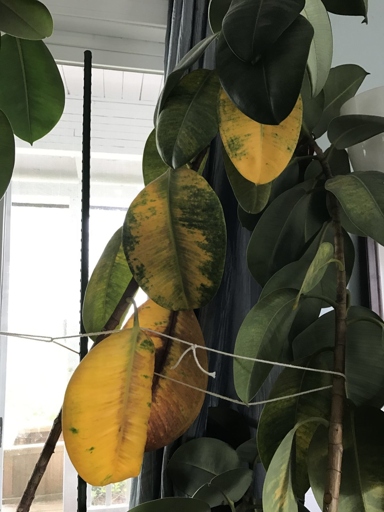
You may also need to trim away any roots that are black and mushy. To treat root rot, you’ll need to remove the affected plant from the pot and replant it in fresh, sterile potting mix.
If you catch root rot early, your rubber plant should recover. But if the problem is severe, the plant may not be able to be saved.
Swollen and Mushy Stem
If you notice that the stem of your rubber plant is swollen and mushy, it’s likely that the plant has root rot. Be sure to water the plant carefully and avoid overwatering in the future. Root rot is a serious condition that can kill your plant if not treated promptly. If the roots are black and mushy, they need to be removed. The first step in treating root rot is to remove the affected plant from the pot and inspect the roots. Once the affected roots have been removed, the plant can be replanted in fresh potting mix.
Stunted Growth
If you think your plant has root rot, you should remove it from the pot and check the roots. If the roots are black and mushy, they need to be removed. If you notice your rubber plant’s leaves drooping and yellowing, it may be a sign of stunted growth. You can then replant the rubber plant in fresh potting mix. Root rot is caused by too much water, which can lead to fungal growth. Stunted growth is often caused by root rot, which is a common problem in rubber plants.
Leaf Discoloration
Overwatering can also cause leaf discoloration. The leaves may turn yellow, brown, or black, and the edges may become dry and brittle. The cause of leaf discoloration is usually a lack of water or nutrients. Leaf discoloration is one of the most common problems with rubber plants.
If the soil is dry, water the plant and see if the leaves start to green up within a few days. If the plant is in a dark location, try moving it to a brighter spot. Too much nitrogen can cause leaf discoloration. If you think your rubber plant has leaf discoloration, the first step is to check the soil. If the soil is moist, try to determine if the plant is getting enough light. If the plant is getting enough light, check the fertilizer you are using to make sure it is not too high in nitrogen.
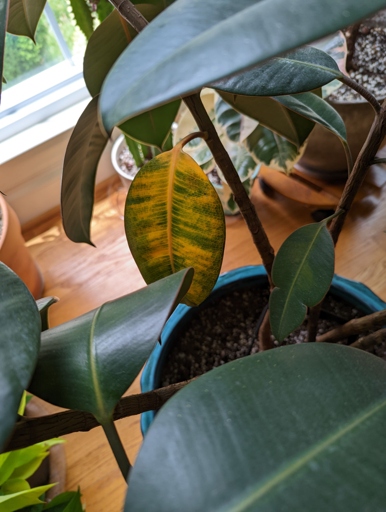
If you are still having trouble diagnosing the problem, you can bring a sample of the plant to your local cooperative extension office or garden center for help.
Rubber Plant and Leaves Wilting
If you think your plant has root rot, the first thing to do is check the roots. Root rot is a common problem with rubber plants, and is caused by too much water. The best way to treat root rot is to remove the affected roots and replant the plant in fresh, well-draining soil. If they’re mushy or black, it’s a sure sign of root rot. If your rubber plant’s leaves are wilting, it’s likely a sign of root rot.
Shoots Dieback
It is caused by a build-up of water in the soil, which leads to the roots rotting. The symptoms include the leaves turning yellow and falling off, the stems becoming soft and mushy, and the plant eventually dying. Shoots Dieback is a common problem with rubber plants. If the problem is caught early, it can be treated by removing the affected parts of the plant and replanting it in fresh soil. The best way to prevent this is to water the plant regularly and make sure that the soil is well-drained.
Brown Spots on leaves
The first step in treating root rot is to remove the affected leaves. Then, you’ll need to water your plant less often and make sure the soil drains well. Root rot is a serious problem that can kill your plant if not treated. If you notice brown spots on the leaves of your rubber plant, it’s a sign that the plant is suffering from root rot. If the root rot is severe, you may need to replant your rubber plant in fresh soil.
Roots Brown and Mushy
If you notice that your rubber plant’s roots are brown and mushy, it’s a sign that the plant is suffering from root rot. Root rot is a serious problem that can kill a rubber plant if it’s not treated.
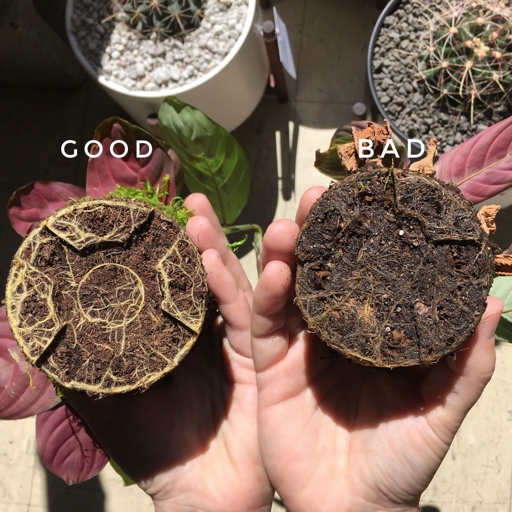
If you think your plant has root rot, it’s important to take action right away. There are a few things that can cause root rot, including overwatering, poor drainage, and compacted soil.
The first step is to improve the drainage around your plant. You also need to be careful not to overwater your plant. If the soil is too compacted, you may need to repot the plant into a new pot with fresh, loose soil. Water it only when the soil is dry to the touch.
In this case, you’ll need to start over with a new plant. If you catch root rot early, it’s possible to save your plant. However, if the roots are already mushy and decaying, it’s likely too late.
What Causes Rubber Plant Root Rot?
These fungi attack the roots of the plant, causing them to rot. The rot can spread to the stem and leaves, causing the plant to die. Rubber plants are susceptible to a number of diseases, but root rot is one of the most common. Root rot is caused by a variety of fungi, including Phytophthora, Pythium, and Rhizoctonia.
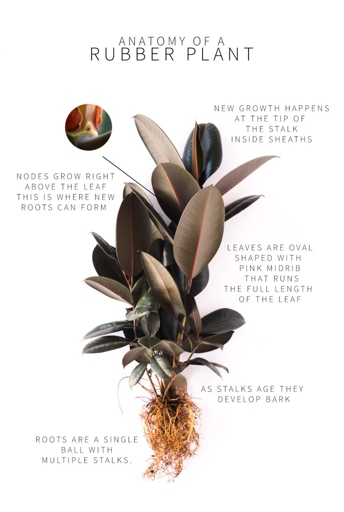
Remove the plant from the pot and inspect the roots. Cut away any affected roots and replant the plant in fresh, well-draining soil. If your rubber plant is showing signs of root rot, it’s important to act quickly. If they are black and mushy, they are probably rotting. There are a number of factors that can contribute to root rot, including overwatering, poor drainage, and compacted soil.
Overwatering causes root suffocation
Signs of root rot include yellowing leaves, wilting, and browning of the roots. Remove the plant from the pot and replant it in fresh, well-draining soil. One of the most common problems with rubber plants is root rot, which is caused by overwatering. If you think your plant has root rot, it’s important to act quickly. If the roots are severely rotted, you may need to trim them back before replanting. The roots of the plant become suffocated and begin to rot, which can kill the plant.
Solution
One of the most common problems with rubber plants is root rot. This can be caused by a number of things, including overwatering, poor drainage, and compacted soil. If you think your plant has root rot, there are a few things you can do to try and save it.
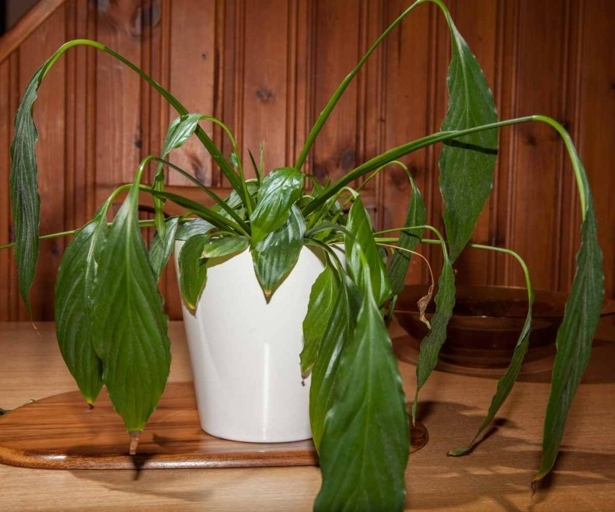
First, you’ll want to remove the plant from its pot and inspect the roots. If they are black or mushy, they are probably rotted. You’ll want to cut away any affected roots and repot the plant in fresh, well-draining soil.
If the plant is still healthy but has a few rotted roots, you can try to save it by carefully removing the affected roots and replanting in fresh soil.
If the plant is beyond saving, you’ll need to dispose of it and start fresh with a new plant.
Be sure to water your plant only when the soil is dry and provide good drainage. If you think your plant has root rot, don’t despair – there are a few things you can do to try and save it. Root rot can be a serious problem for rubber plants, but it can be avoided with proper care.
Poor Drainage Creates Water Logged Condition
One of the most common problems with rubber plants is root rot, caused by poor drainage. If they are, the plant is probably beyond saving. This creates a water-logged condition that can kill the plant. If you see this, check the roots to see if they are brown and mushy. The first sign of root rot is usually wilting leaves. If you catch the problem early, you may be able to save the plant by replanting it in fresh, well-drained soil.
Solution
If you’re watering your plant too often, or if the pot doesn’t have good drainage, that could be the cause. If you think your rubber plant may have root rot, the first step is to check the roots. Root rot is usually caused by too much water or poor drainage. If they’re mushy or black, it’s likely that your plant has root rot. If the root rot is caused by poor drainage, you’ll need to replant the plant in a pot with better drainage. The next step is to determine the cause. If the root rot is caused by too much water, you’ll need to let the plant dry out. Once you’ve determined the cause, you can take steps to treat the root rot. You may also need to treat the plant with a fungicide.
Poorly Drained Soil
If your rubber plant’s leaves are yellowing and wilting, it may be a sign of root rot. Treatment for root rot includes improving drainage and removing affected roots. Root rot is caused by poorly drained soil, which can lead to fungal growth.
Solution
If the root rot is caused by poor drainage, you’ll need to improve the drainage in your plant’s pot. If the root rot is caused by a lack of aeration, you’ll need to aerate the soil around your plant’s roots. If they’re mushy or black, it’s likely that your plant has root rot. If you think your rubber plant has root rot, the first step is to check the roots. The next step is to determine the cause. Once you’ve determined the cause, you can take steps to treat the root rot. Root rot can be caused by overwatering, poor drainage, or a lack of aeration in the soil. If the root rot is caused by overwatering, you’ll need to water your plant less often.
Fungal Infection
The first step is to identify the type of fungus that is causing the problem. There are many different types of fungi that can infect rubber plants, so it is important to get a diagnosis from a professional. Fungal infections are one of the most common problems that affect rubber plants. If your plant is showing signs of root rot, it is important to take action immediately. Once the type of fungus is identified, you can choose the best treatment option.
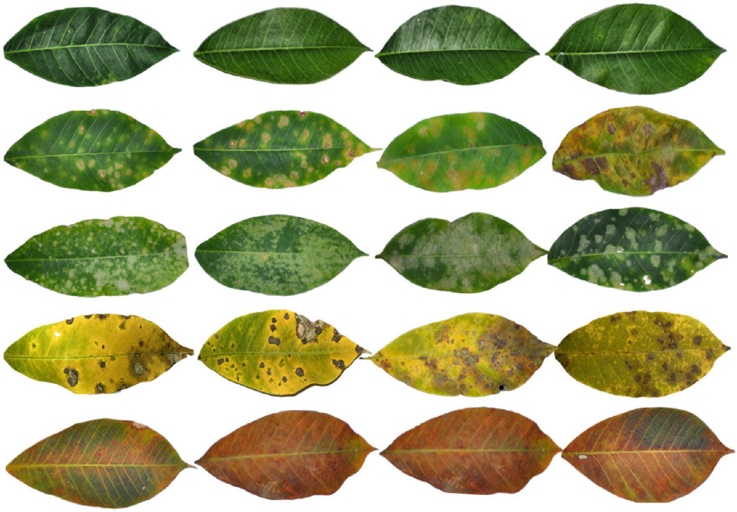
There are many different fungicides that are available to treat fungal infections. In most cases, you will need to apply the fungicide several times before the infection is completely eradicated. Be sure to follow the directions on the label carefully. The most important thing is to choose a product that is specifically designed to kill the type of fungus that is affecting your plant.
Root rot can be a serious problem for rubber plants. If you think your plant may be infected, it is important to take action immediately. By taking the time to identify the type of fungus and choosing the right treatment, you can get rid of the infection and keep your plant healthy.
Fungi That Cause Root Rot
There are many different types of fungi that can cause root rot, but the most common are Pythium, Phytophthora, and Rhizoctonia. Fungi are one of the most common causes of root rot in plants. Fungi thrive in moist, humid conditions and can quickly spread through the roots of a plant, causing the plant to wilt and die. These fungi can be difficult to control, but there are some things that you can do to prevent them from infecting your plants.
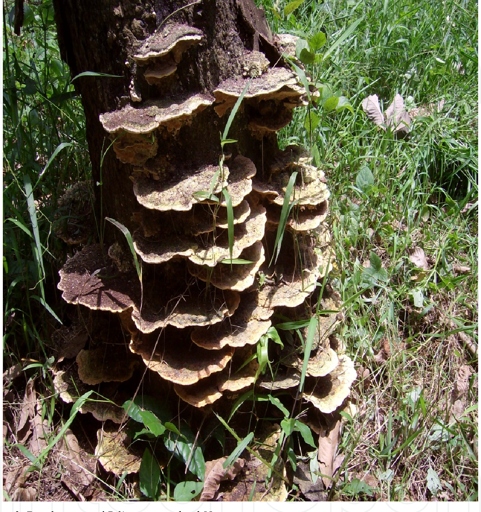
Keep them well-watered and fertilized, and make sure they have good drainage. If you do notice any signs of root rot, such as wilting or yellowing leaves, remove the affected plant from your garden immediately. The best way to prevent root rot is to keep your plants healthy and stress-free. You can also try using a fungicide to treat the affected area.
Solution
If your rubber plant’s leaves are wilting, yellowing, or falling off, it may have root rot. Root rot is a serious problem that can kill your plant.
There are several things you can do to treat root rot. If your plant is underwatered, you need to water it more. If your plant is overwatered, you need to water it less. You also need to make sure your plant is getting enough light. First, you need to identify the problem.
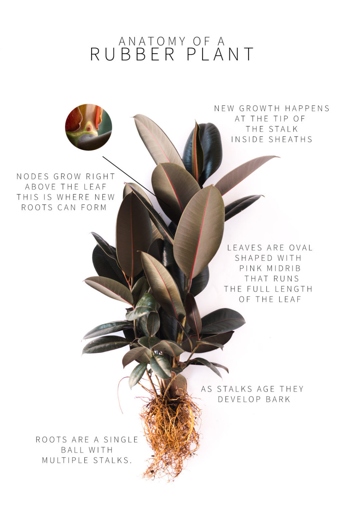
If you think your plant has root rot, you should take it to a professional. They will be able to help you diagnose the problem and find the best solution.
Too Large Pot Holds Water For A Long Time
If you have a rubber plant that is suffering from root rot, it is likely because the pot is too large. The best way to prevent this from happening is to choose a pot that is the appropriate size for the plant. If you are not sure what size pot to choose, ask a nursery worker or another expert. A pot that is too large holds water for a long time, which can lead to the roots of the plant rotting.
Solution
If your rubber plant’s leaves are wilting, yellowing, or drooping, it may be a sign of root rot. Root rot is a serious problem that can kill your plant.
First, improve the drainage in your plant’s pot. Second, water your plant less frequently. Third, remove any affected roots and replant in fresh soil. There are a few things you can do to treat root rot.
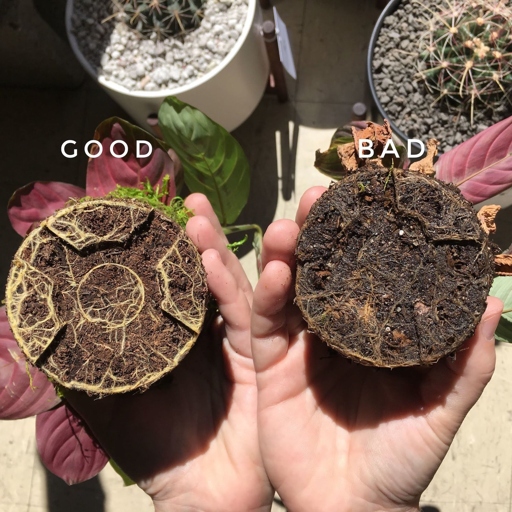
If you catch root rot early, you can save your plant. But if the problem is severe, it’s best to start over with a new plant.
Low Temperature Encourages Root Rot
If you think your plant has root rot, you can try treating it with a fungicide. The best way to prevent root rot is to keep your rubber plant in a warm, dry environment. However, it is often difficult to save a plant once it has root rot, so it is important to prevent it from happening in the first place. If you notice your rubber plant’s leaves turning yellow and wilting, it may be a sign of root rot. Root rot is a common problem for rubber plants, especially when they are grown in low temperatures.
Solution
Solution:
If you think your rubber plant has root rot, the first thing to do is check the roots. If they are brown and mushy, then you will need to take action to save your plant.
If more than half of the roots are affected, it is best to dispose of the plant. If the root rot is localized to a small area, you can try to save the plant. The first step is to remove the plant from its pot and inspect the roots.
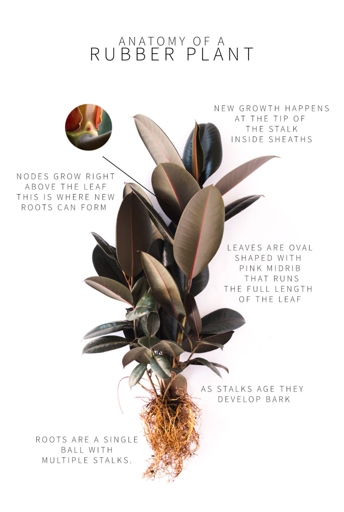
To do this, you will need to trim away the affected roots and repot the plant in fresh potting mix. Be sure to water the plant carefully, as too much or too little water can exacerbate the root rot problem.
If you catch the root rot early, there is a good chance you can save your rubber plant. However, once the roots are severely affected, it is often best to start over with a new plant.
Watering Out of Season
Watering Out of Season
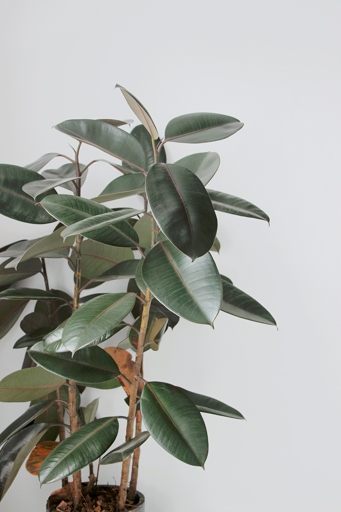
One of the main causes of root rot in rubber plants is watering out of season. Overwatering can lead to fungal growth and root rot, so it’s important to be careful when watering your rubber plant during its dormant period. When the plant is not actively growing, the roots don’t need as much water and can actually be harmed by too much moisture.
If you think your rubber plant may be suffering from root rot, there are a few signs to look for. The leaves may turn yellow or brown, and the plant may start to wilt. The roots may also be discolored or mushy. If you see any of these signs, it’s important to stop watering the plant and allow the roots to dry out. Once the roots are dry, you can replant the rubber plant in fresh, well-draining soil.
Solution
Root rot can be caused by overwatering, poor drainage, or a lack of aeration. If the root rot is caused by overwatering, you’ll need to allow the plant to dry out. If they’re mushy or black, it’s likely that your plant has root rot. If you think your rubber plant has root rot, the first step is to check the roots. If the root rot is caused by poor drainage, you’ll need to improve the drainage. The next step is to determine the cause. Once you’ve determined the cause, you can take steps to treat the root rot. If the root rot is caused by a lack of aeration, you’ll need to provide more aeration.
Impermeable Pot Material
If you’re growing rubber plants (Ficus elastica), you know they’re tough plants that can tolerate a wide range of growing conditions. But even rubber plants can succumb to root rot if they’re not cared for properly.
Root rot is a common problem with potted plants, and it’s often caused by overwatering. Rubber plants are especially susceptible to root rot because they have thick, fleshy roots that hold onto moisture.
If they’re brown and mushy, that’s a sure sign of root rot. You can also try to gently pull on the plant to see if the roots are holding onto the potting mix. If you think your rubber plant has root rot, the first thing to do is check the roots. If they’re not, that’s another sign of root rot.
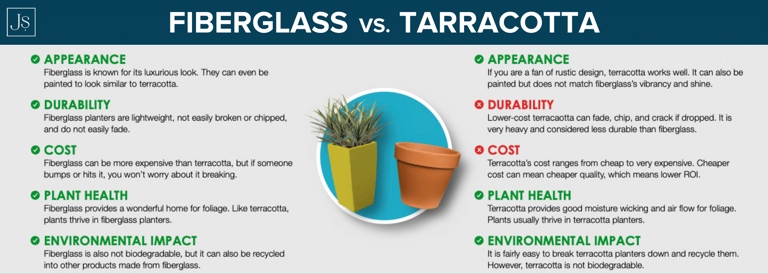
If you catch root rot early, you may be able to save your plant by replanting it in fresh potting mix and making sure to water it properly. But if the root rot has progressed too far, you’ll likely have to say goodbye to your rubber plant.
Solution
The first step is to remove the plant from its pot and inspect the roots. Be sure to water it regularly, but be careful not to overwater, as this can exacerbate the problem. With a little care, your rubber plant should recover from root rot and continue to thrive. First, you need to identify the signs of root rot, which include yellowing leaves, wilting, and stunted growth. Once you’ve identified that your plant has root rot, you need to take action to save it. If they are black and mushy, you will need to trim them away. If your rubber plant is suffering from root rot, there are a few things you can do to save it. Once you’ve trimmed away the affected roots, you can replant your rubber plant in fresh, well-draining soil.
How to Save Rubber Plant from Root Rot
Root rot is usually characterized by dark, mushy, or smelly roots. If you see any of these signs, it’s important to take action immediately. If you think your rubber plant has root rot, the first step is to check the roots.
You may also want to treat the plant with a fungicide to help prevent the spread of the disease. Be sure to remove all of the affected roots before replanting. The best way to save a rubber plant with root rot is to replant it in fresh, well-draining soil.
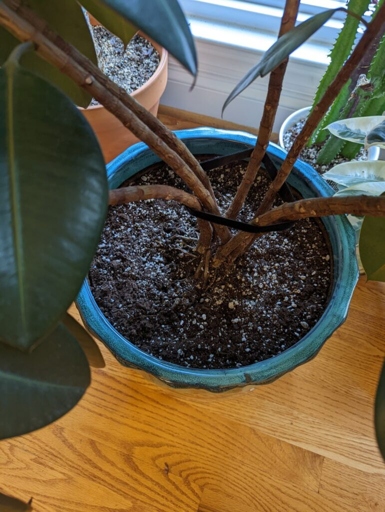
If your rubber plant is too far gone to save, you can try propagating it from a healthy cutting. This is a bit of a last resort, but it’s worth a try if you’re attached to your plant.
With a little care and attention, you can get your plant back to good health in no time. Root rot can be a serious problem for rubber plants, but it doesn’t have to be the end of the world.
Step 1: Stop Watering
This will give the plant a chance to dry out and hopefully kill the fungus. If the plant is still alive, you can try to save it by replanting it in fresh, dry soil. If the plant is already dead, there’s no point in watering it, so you might as well just throw it away. If you think your rubber plant has root rot, the first thing you should do is stop watering it.
Step 2: Remove the Infected Leaves and Parts
This will help prevent the spread of the disease and give the plant a better chance of recovering. If you think your rubber plant has root rot, the first step is to remove any infected leaves and parts.
Be sure to disinfect the knife after each cut to avoid spreading the disease. If the leaves are only slightly discolored, you can try to remove the affected area with a sharp knife. Start by cutting off any leaves that are yellow, brown, or wilted.
Next, remove any stems that are discolored or mushy. Again, disinfect the cutting tool after each cut.
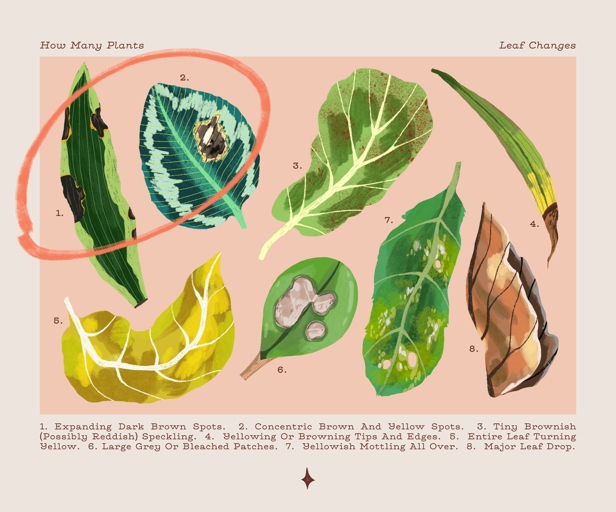
Do not compost them, as this could spread the disease to other plants. Once you have removed all the infected leaves and parts, dispose of them in the trash.
Step 3: Remove the Plant from the Pot
If you think your rubber plant has root rot, the first step is to remove the plant from the pot. This will allow you to inspect the roots and determine if they are indeed rotted. If they are, you’ll need to trim away the rotted roots and repot the plant in fresh, sterile potting mix.
Step 4: Trim the Infected Roots
The next step is to trim the infected roots. If you think your rubber plant has root rot, the first step is to check the roots. Be sure to disinfect your tools before and after use. If they’re mushy or black, it’s time to take action. This will help the plant to heal and prevent the spread of the disease.
Step 5: Repot the Plant
Finally, be sure to water the plant well after repotting. Allowing the plant to dry out completely will only make the root rot problem worse. If the pot is too large, the plant will have a difficult time adjusting and could end up suffering from root rot. Second, use a well-draining potting mix. First, make sure that the new pot is only slightly larger than the old one. When it comes to repotting a rubber plant, there are a few things to keep in mind. This will help to keep the plant’s roots from sitting in water, which can lead to root rot.
Step 6: Water the Plant
Root rot is a serious condition that can kill your plant if left untreated. If you notice your rubber plant’s leaves drooping and its stems turning yellow, it’s likely suffering from root rot.
If the roots are rotted, they won’t be able to absorb water properly, so overwatering will only make the problem worse. To treat root rot, start by watering your plant less frequently. Allow the soil to dry out completely between waterings.
Be sure to clean the roots of any dead or rotted tissue before replanting. Next, repot your plant in fresh, well-draining soil.
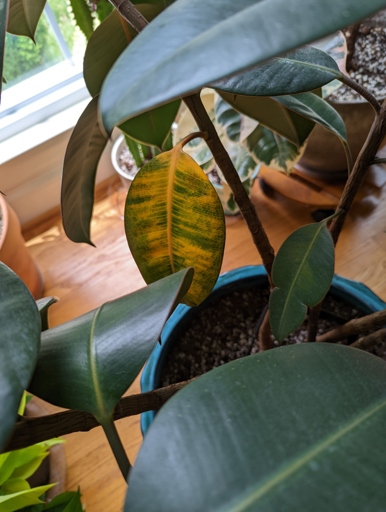
Finally, water your plant with a root rot fungicide to help prevent the problem from returning.
With proper treatment, your rubber plant should recover from root rot and return to good health.
Step 7: Maintain Optimum Conditions
Once your plant is showing signs of recovery, it is important to maintain optimum conditions to prevent root rot from recurring. If the cause is too much water, you will need to water your plant less often. If the cause is poor drainage, for example, you will need to improve the drainage in your potting mix. The first step is to identify the cause of the problem and take steps to correct it.
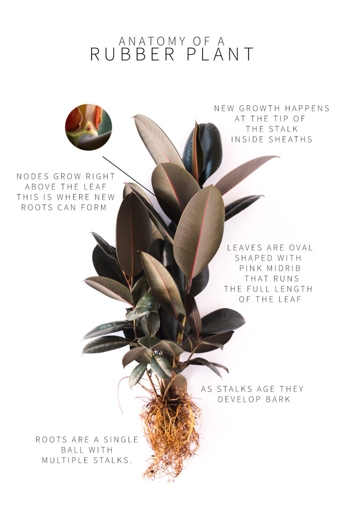
One way to do this is to water your plant only when the potting mix is dry to the touch. Once you have corrected the problem that caused the root rot in the first place, you will need to take steps to prevent the problem from recurring. You can also add a layer of gravel to the bottom of your pot to improve drainage. This will help to prevent the roots from sitting in water for too long.
By taking these steps, you can help to prevent root rot from occurring in the future and keep your rubber plant healthy and happy.
Step 8: (Severe Root Rot) Propagate the Rubber Plant
Once the cutting has rooted, you can then plant it in a pot with fresh soil. This can be done by taking a cutting from the plant and placing it in water. If your rubber plant has severe root rot, you will need to propagate it.
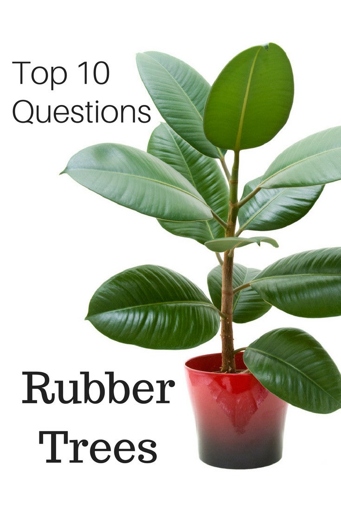
If you think your rubber plant has root rot, it is important to take action immediately. Propagating the plant is the best way to ensure its survival. Root rot is a serious problem for rubber plants and can quickly kill the plant if left untreated.
Organic and Chemical Treatment
Organic and Chemical Treatment
You can also try using a root rot fungicide, such as Trichoderma harzianum, to treat the plant. Organic treatment for root rot in rubber plants includes removing the affected roots and replanting the plant in fresh, sterile potting mix.
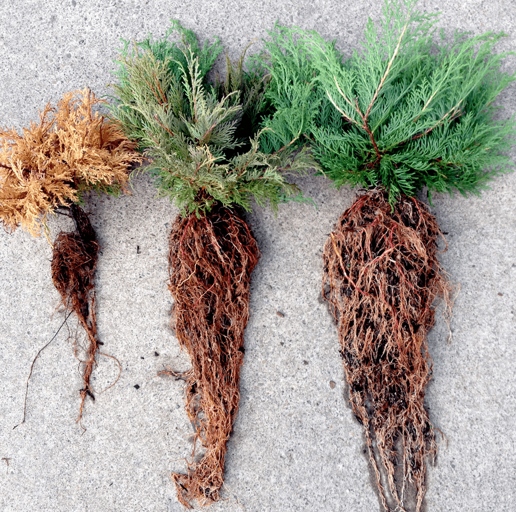
Chemical treatment options for root rot in rubber plants include using a fungicide, such as fosetyl-Al, or a bactericide, such as streptomycin. You can also try using a root rot fungicide, such as Trichoderma harzianum, to treat the plant.
Applying Chemical Fungicides
If they’re brown and mushy, root rot is likely the problem. Remove the plant from its pot and examine the roots. If you think your rubber plant has root rot, the first step is to check the roots.
Once you’ve confirmed that root rot is the issue, it’s time to treat the plant. The best way to do this is with a chemical fungicide. These products are designed to kill the fungi that cause root rot.
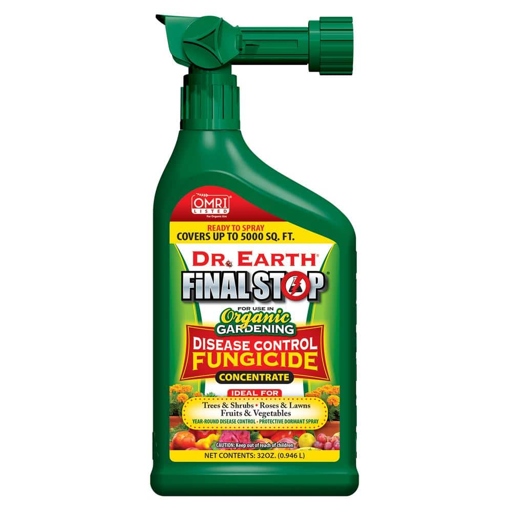
First, make sure you choose a product that’s specifically designed for use on plants. Second, follow the directions on the label carefully. There are a few things to keep in mind when using a chemical fungicide.
They may recommend a different course of treatment. If you treat your rubber plant with a chemical fungicide and the root rot doesn’t improve, it’s time to consult a professional.
Hydrogen Peroxide
It can also be used to treat root rot in rubber plants. Hydrogen peroxide is a popular household product that has a variety of uses, including as an antiseptic.
Hydrogen peroxide can help to treat root rot by increasing oxygen levels in the soil and promoting the growth of healthy roots. Root rot is a common problem in rubber plants, and can be caused by a variety of factors, including overwatering, poor drainage, and compacted soil.

Be sure to monitor the plant closely, and discontinue use if the plant shows any signs of distress. To use hydrogen peroxide to treat root rot, mix one part hydrogen peroxide with two parts water. Apply the mixture to the affected area of the plant, and water as usual.
Activated Charcoal
It is important to note that activated charcoal should only be used as a temporary measure, as it can strip the soil of essential nutrients over time. When used to treat root rot, activated charcoal can help remove harmful bacteria and fungi from the affected area. Activated charcoal is a type of carbon that has been treated to be extremely porous. This makes it ideal for adsorbing toxins and other substances from the body.
Cinnamon
It is made from the bark of the cinnamon tree, which is native to Sri Lanka. Cinnamon has a sweet, warm flavor and is used in many sweet and savory dishes. Cinnamon is a spice that has been used for centuries in cooking and baking.
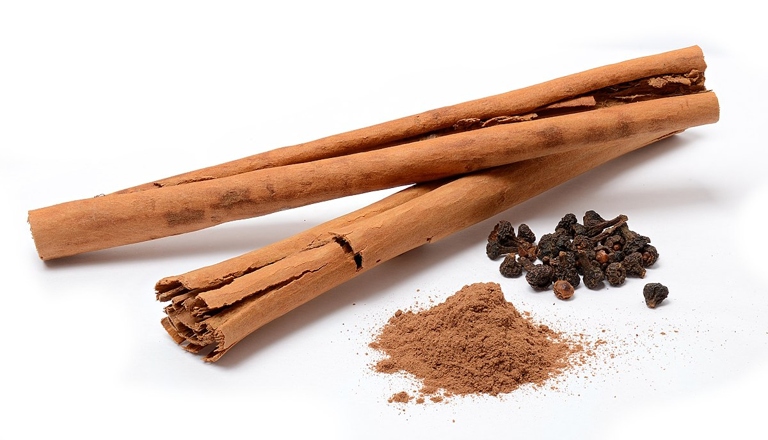
Cinnamon has been used traditionally to treat colds and flu, and to help with digestion. Cinnamon is a good source of antioxidants and has been shown to have anti-inflammatory and anti-microbial properties.
Ceylon cinnamon is considered to be the true cinnamon, while cassia is a cheaper alternative. Cassia cinnamon is more common in the United States. There are two main types of cinnamon, Ceylon and cassia.
Cinnamon can be used in many different ways, such as in baking, in savory dishes, or in a cup of tea. It is also a popular ingredient in many health supplements.
Chamomile
When brewed as a tea, chamomile is thought to be a relaxant, can be helpful in restoring insomnia, and be a soothing detoxifier of the gut. Chamomile (Matricaria chamomilla) is a dried flower that can be found pre-packaged at most health food stores. Chamomile can be enjoyed fresh or dry, and is easily brewed with just a small handful of chamomile blossoms yielding about 2 ounces. Chamomile tea infusion has a sweet—fruity taste and is naturally caffeine-free.
How to Prevent and Control Rubber Plant Root Rot
But even the most low-maintenance plants can get sick from time to time. If you’re a fan of rubber plants, you know that they’re relatively easy to care for. One of the most common problems that rubber plants face is root rot.
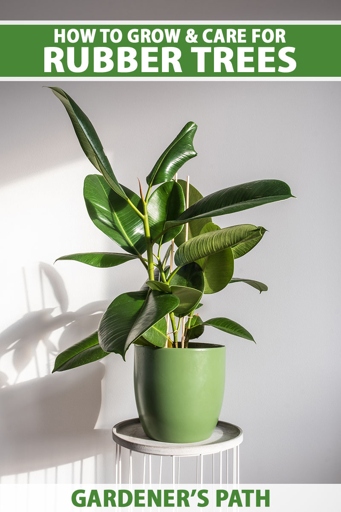
This can happen if you water your plant too often, or if the pot doesn’t have proper drainage. Root rot can also be caused by overwatering. Root rot is caused by a build-up of water in the soil.
If you think your plant might have root rot, the first thing you should do is check the roots. If they’re brown and mushy, that’s a sure sign of root rot.
If they’re severely damaged, you may need to trim them back. Once you’ve confirmed that your plant has root rot, it’s important to take action immediately. The first step is to remove the plant from its pot and inspect the roots.
Once you’ve trimmed the roots, it’s important to replant the rubber plant in fresh, well-draining soil. You may also want to consider repotting the plant in a pot with drainage holes.
If you take these steps, you should be able to save your rubber plant from root rot.
Avoid Waterlogging
When the roots of a rubber plant are constantly exposed to moisture, they can become waterlogged and begin to rot. Waterlogging is one of the leading causes of root rot in rubber plants. This can happen if the plant is watered too often, if the pot does not have adequate drainage, or if the plant is growing in a location that is constantly wet.
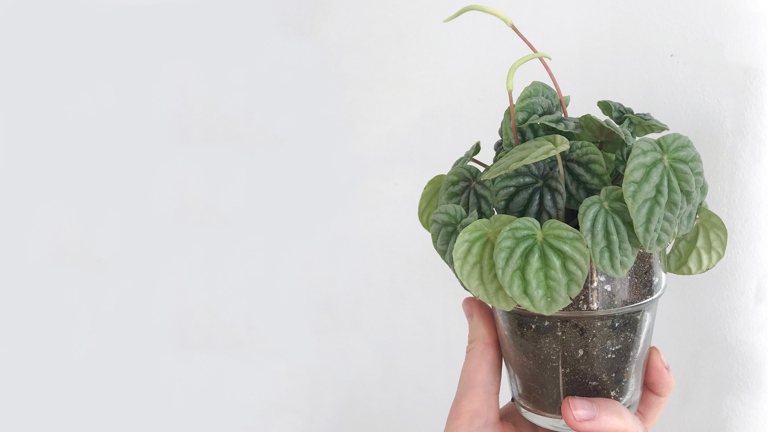
If the plant is receiving too much water, the roots can become waterlogged and begin to rot. Waterlogging can also occur if the plant is overwatered. Overwatering can also cause the leaves of the plant to turn yellow and drop off.
First, try to reduce the amount of water you are giving the plant. You can also try moving the plant to a drier location. If the roots are already rotting, you may need to trim them back to healthy tissue. If the plant is in a pot, make sure that the pot has adequate drainage. If you think your rubber plant may be waterlogged, there are a few things you can do to help it recover.
Using Appropriate Soil Mix
If you’re not using the right mix, your plant is more susceptible to root rot. When it comes to rubber plants, the type of soil mix you use can make all the difference.
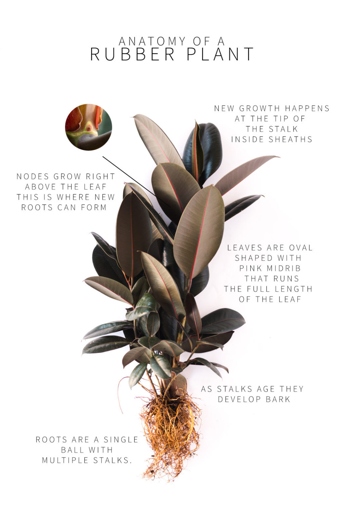
There are a few things to keep in mind when choosing a soil mix for your rubber plant. First, make sure the mix is well-draining. Rubber plants don’t like to sit in wet soil, so a mix that drains well is essential.
Second, choose a mix that contains organic matter. This will help to keep the soil moist and help your plant’s roots to stay healthy.
Finally, make sure the mix you choose is appropriate for the size of your plant. If you’re not sure, ask a professional at your local nursery. They can help you choose the right mix for your rubber plant.
Watering Schedule
The first step in treating root rot is to figure out what is causing it. Water your plant less often, and allow the soil to dry out between waterings. If you can’t figure out what is causing the root rot, you may need to consult a professional. If you notice your rubber plant’s leaves drooping and yellowing, it could be a sign of root rot. If you’re not overwatering, the problem could be caused by poor drainage. Make sure your plant is in a pot with drainage holes, and that the holes are not blocked. If you’re overwatering your plant, you’ll need to adjust your watering schedule. Root rot is a serious problem that can kill your plant.
Loosen Soil
You can do this by adding organic matter to the soil, such as compost or peat moss. To treat root rot, you’ll need to loosen the soil and improve drainage. If you notice your rubber plant’s leaves drooping and yellowing, it may be a sign of root rot. Root rot is a common problem for rubber plants, especially if the soil is too wet or compacted. You may also need to replant your rubber plant in a new pot with fresh, well-drained soil.
Rubber Plant Care Requirements
The best way to treat root rot is to remove the affected plant from the pot and replant it in fresh, sterile potting mix. Be sure to water the plant carefully, as too much water can worsen the root rot. If you catch the root rot early, your rubber plant should recover quickly. If you notice any of these signs, you should immediately treat the plant. If you have a rubber plant in your home, you need to be aware of the care requirements to keep it healthy. Rubber plants are susceptible to root rot, so it’s important to keep an eye out for signs of this disease. Some of the signs of root rot include yellowing leaves, wilting, and leaf drop.
Frequently Asked Questions
1. What are the signs of rubber plant root rot?
The signs of rubber plant root rot include yellowing leaves, wilting, and leaf drop. The leaves may also have brown or black spots. The plant may also have stunted growth.
2. What causes rubber plant root rot?
Rubber plant root rot is caused by a fungi called Phytophthora. This fungi is found in soil and water. It can also be spread by infected plant debris.
3. How can I treat rubber plant root rot?
The best way to treat rubber plant root rot is to remove the affected plant from the pot. Cut away any affected roots and leaves. Treat the plant with a fungicide. You can also try to control the fungi by improving drainage and increasing air circulation.
4. How can I prevent rubber plant root rot?
You can prevent rubber plant root rot by not overwatering your plant. Allow the soil to dry out between watering. You should also avoid waterlogged soil. Be sure to clean up any fallen leaves or debris from the plant.
5. What should I do if my plant is already affected by root rot?
If your plant is already affected by root rot, you should remove the affected plant from the pot. Cut away any affected roots and leaves. Treat the plant with a fungicide. You can also try to control the fungi by improving drainage and increasing air circulation.
Final thoughts
Root rot is a serious problem for rubber plants. If you think your plant has root rot, it’s important to act quickly. Signs of root rot include yellowing leaves, wilting, and stunted growth. If you suspect your plant has root rot, you should check the roots for signs of decay. If the roots are black and mushy, your plant probably has root rot. The best way to treat root rot is to replant the rubber plant in fresh, well-draining soil.
